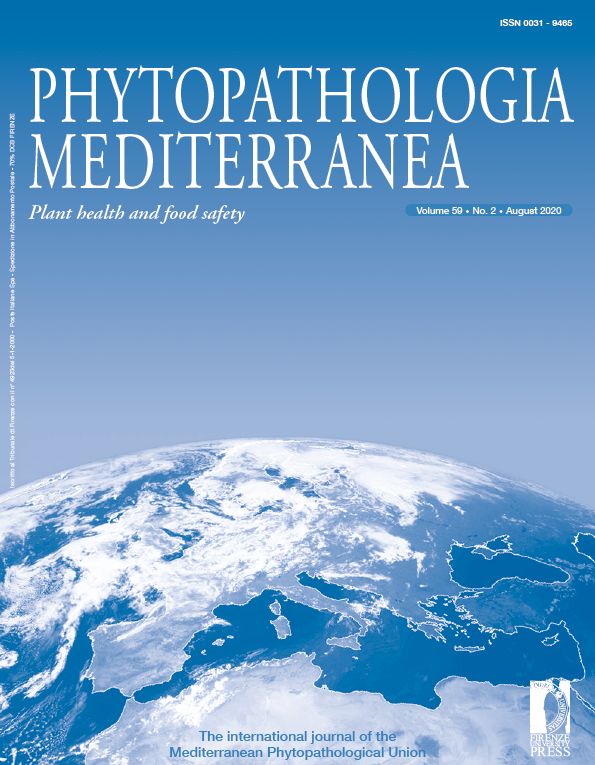Emerging leafy vegetable crop diseases caused by the Fusarium incarnatum-equiseti species complex
Published 2020-07-17
Keywords
- FIESC leaf spot diseases,
- multi-locus sequence typing,
- phylogenetic analyses,
- pathogenicity assays
How to Cite
Funding data
-
Horizon 2020
Grant numbers 634179;633999
Abstract
Fusarium equiseti, a member of the Fusarium incarnatum-equiseti species complex (FIESC), has recently been reported in Italy as the causal agent of a leaf spot diseases on previously unrecorded plant hosts. This emerging disease has affected leafy vegetable hosts including lettuce, lamb’s lettuce, wild rocket, cultivated rocket, spinach and radish, and has caused symptoms that have not been previously described on those plants. Fifty-two fungal isolates obtained from symptomatic plants and different plant organs were identified according to their morphology as belonging to the FIESC. The present study aimed to characterize these isolates by identifying their FIESC phylogenetic species, and to evaluate their pathogenicity and host ranges. Six phylogenetically different species of FIESC were identified using MLST analyses of four loci (tef1, cmdA, tub2, and IGS). Most of the isolates were found to belong to F. compactum or F. clavum, while the other four FIESC species were represented by only a few isolates. All the fungal isolates were capable of inducing leaf spot diseases as single isolates with fulfilling Koch’s postulates for these fungi. The intraspecies diversity of the FIESC, the seed-originated isolates of four FIESC identified species, and enhanced range of experimental hosts were observed in the FIESC emerging diseases of these vegetable hosts in Italy. Strict seed inspection procedures, and suitable alteration of environmentally friendly fungicides and biological control agents should achieve efficient management of the FIESC leaf spot diseases on vegetable crops, and prevent further spread of these pathogens to new hosts and new geographical areas.







